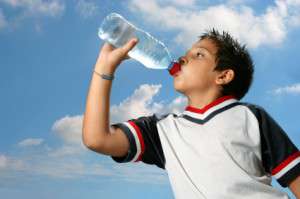In my experience, dehydration is one of the most easily preventable injuries. Unfortunately, most people only associate dehydration with extremely hot temperatures and low-humidity. Cold temperatures, varying altitudes, and humidity levels are also important environmental factors which should be factored when planning to prevent dehydration.
It cannot be understated that dehydration will eventually lead to shock. Shock is a life-threatening condition. The type of shock typically associated with dehydration is called hypovolemic shock, where the body's volume of blood is compromised due to lack of fluid. The blood flows less readily throughout the body and blood pressure also drops.
 What is dehydration?
What is dehydration?
Stedman's Concise Medical Dictionary defines dehydration simply as the
deprivation of water [and/or the] process of losing body water…
The clinical definition would also include the mention of an imbalance in the body's “fluid-salt” balance and emphasize restoring electrolyte levels along with the rehydration treatment process. But, since I am not a doctor, we'll keep it simple & practical.
Signs of dehydration
Some common signs of dehydration include increased thirst, dry mouth & throat, chapped lips, decreased urine output, lethargic mood, constipation, and dizziness.
Severe signs of dehydration should be considered a medical emergency and professional medical treatment should be sought immediately. Mayoclinic says severe dehydration can cause the following:
- Extreme thirst
- Extreme fussiness or sleepiness in infants and children; irritability and confusion in adults
- Very dry mouth, skin and mucous membranes
- Lack of sweating
- Little or no urination — any urine that is produced will be dark yellow or amber
- Sunken eyes
- Shriveled and dry skin that lacks elasticity and doesn't “bounce back” when pinched into a fold
- In infants, sunken fontanels — the soft spots on the top of a baby's head
- Low blood pressure
- Rapid heartbeat
- Rapid breathing
- No tears when crying
- Fever
- In the most serious cases, delirium or unconsciousness
Preventing Dehydration
Preventing dehydration includes maintaining adequate levels of hydration and providing enough water for the activity-level and environment to be pursued, as well as the age-level of participants.
Having “just enough” water to keep individuals hydrated is not the same as making sure everyone has his and her own water supply as well as enough water on-hand to replenish personal hydration supplies.
If outdoor activities include continued exposure to direct sunlight and heat, shelters such as canopies and tents should be provided. Ventilation via fans and air coolers can also help to maintain people cool.
-The Berkey Guy







No comments yet.